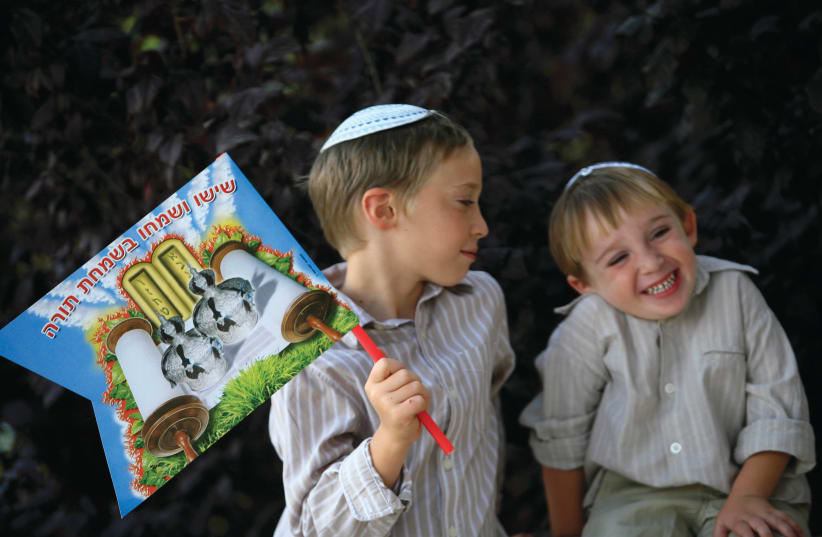On Simhat Torah in our eternal city, we dance with great joy. We sing with real fervor. Here in Jerusalem, we have been blessed to complete the reading of the Torah and then start it again. So that every Israeli can participate, there are the “hakafot sheniot” held across the country on the night after the actual Simhat Torah.
We have always sought ways to infuse this final fall holiday with a meaning all its own. Being an American by birth, it has been important to me to search resources to find out how my forebearers there observed the holiday in the traditional manner and also developed spiritual innovative ways to add meaning to the holiday. Personally, as a student rabbi in the 1960s, I organized and led the Simhat Torah celebration in Easton, Maryland and in Statesville and Wilson, North Carolina.
In the San Francisco Call newspaper on October 5, 1879, this story appeared: “On Simhat Torah all the sephorim [sic], scrolls of the law, were taken out of the Ark, carried in procession around the synagogue.”
The ritual there was the same as what we follow. “The last chapter of Deuteronomy and the first chapter of Genesis were read in succession in order that there may be no break in the Law.”
In California, the Jews created new ways to observe the holiday in a social fashion. “A Simhat Torah ball was held on October 18, 1913 at the Majestic Theater downtown; money raised for the local Hebrew school.” This new use of the festive observance in a social manner helped fill the depleted coffers required for Jewish education.
The crisis in Atlanta after the lynching of Leo Frank in August 1915 possibly could have deterred the Jews there from holding Simhat Torah services with lively singing and dancing. It is not clear what was done in the synagogue since Leo Frank had been a member there. However, the Atlanta Constitution reports that in the “Gilmer Street synagogue (Ahavath Achim) and the Hunter Street synagogue (Shearith Israel), the boys and girls of the Hebrew faith and the adults too listened closely to the reading of scroll and filled the synagogues with their joyful singing and some even danced.” As the Paris correspondent of the Jewish Telegraphic Agency sat with other European Jews in the city on the eve of the holiday in October 1934, he wrote “in spite of the Nazis and other antisemites, we still rejoice and pray for a prolonged Simhat Torah.” With World War II raging, the observance of Simhat Torah was toned down because American Jews, whose shores were never breached during the war, did not want the 550,000 men and women serving in all branches of the American forces to feel that at home they were dancing when the GIs were fighting all over the world.
“Now that the war is over,” Rabbi Hyman Friedman of Shearith Israel noted in 1946, “the most enthusiastic celebration of Simhat Torah and other holidays will again be possible. When the time comes for Simhat Torah, we should get our dancing shoes ready.” I can personally attest to a most exciting Simhat Torah he led in 1946. My father had returned from Tokyo in April 1946, where he completed his six years of army service as a judge advocate. In our 1941 Plymouth, he drove my mother and me back to our home in Atlanta. I enrolled in the Hebrew school headed by Friedman. The Simhat Torah celebration of 1946 was led by him and his wife Yehudis in a most exuberant manner, which I have seen matched only here in Israel. Young and old put on their “dancing shoes” for the 1946 holiday.
Annually, we can observe the growing participation of women in the Simhat Torah singing and dancing.
Two noted women rabbis Jill Jacobs and Jill Hammer explained the meaning of this celebration of Simhat Torah for women.
“The image of ‘dancing in the face of darkness,’ as Jewish women became liberated on Simhat Torah meant much to us because in our synagogues we burst into the chilling fall night air dancing with the Sifrei Torah. As we danced, we were fortified with strength and energy for the challenges ahead.” In her “Guide to Simhat Torah,” Hammer wrote, “I have never in my adult life missed Simhat Torah. I have danced with the Torah in student chapels, in formal synagogues, in the seminaries and in the streets of Boston and New York.” Then she stressed how important the holiday has been to her.
“To join a dance circle, I have run down 40 or more steps. I have crept through crowds to make sure I could dance. Simhat Torah is the holiday I look to all year, not only because of its celebration of joy and music, but because it’s a celebration of God as change-maker. For me, Simhat Torah celebrates the possibility of rereading the Torah in a new light.”
